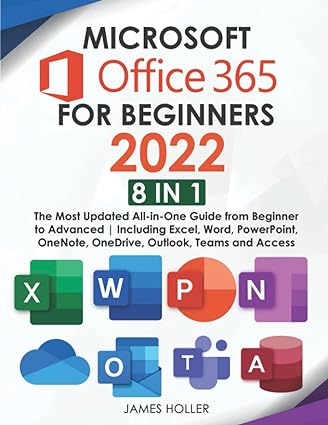Question
The function F is defined as F(1) = F(2) = F(3) = 1 and for n 3, F(n + 1) = F(n) + (F(n 1)
The function F is defined as F(1) = F(2) = F(3) = 1 and for n 3, F(n + 1) = F(n) + (F(n 1) F(n 2)) i.e., the (n + 1)th value is given by the sum of the nth value and the multiplication of the (n 1)th and (n 2)th values.
(a) Write an assembly program for computing the kth value F(k), where k is an integer bigger than 3 read from a memory location M, and storing F(k) at memory location M.
Instruction Set Architecture We present a list of instructions typical of a RISC (reduced instruction set computer) machine. In data-movement and control instructions, the addresses may be immediate #X, direct (memory) M, indirect (memory) [M], register r, or register indirect [r] addresses. Data-processing instructions use immediate or register addressing. PC is the programme counter and a <- b indicates that the value of b is placed in a.
| LOAD a, b STOR a, b ADD a, b, c SUB a, b, c MUL a, b, c DIV a, b, c AND a, b, c OR a, b, c NOT a, b ASH a, b, c LSH a, b, c BR a BEQ a, b, c BNE a, b, c BLT a, b, c BGT a, b, c BLE a, b, c BGE a, b, c | a <- b a <- b a <- b + c a <- b - c a <- b * c a <- b / c a <- b & c a <- b | c a <- !b a <- b arithmetically shifted by c positions a <- b logically shifted by c positions PC <- a PC <- a if b is equal to c PC <- a if b is not equal to c PC <- a if b is less than c PC <- a if b is greater than c PC <- a if b is less than or equal to c PC <- a if b is greater than or equal to c |
Most instructions have floating-point versions when special floating-point registers are used (but we will not need these). Most architectures use two addresses, where the first (or second) argument serves both as the target and one of the sources, e.g., ADD a, b means a <- a + b. For branch instructions BR X means to jump to instruction X (i.e., load the address of instruction X into PC). We will use a five-stage pipeline: IF (instruction fetch), ID (instruction decode), RR (register read), EX (execute instruction), WB (write back result). We will assume that for data-movement instructions the data transfer between the CPU and main memory happens in the execute stage. Note that for some instructions (e.g., LOAD r, #X) some of the pipeline stages (e.g., RR) are not needed.
Step by Step Solution
There are 3 Steps involved in it
Step: 1

Get Instant Access to Expert-Tailored Solutions
See step-by-step solutions with expert insights and AI powered tools for academic success
Step: 2

Step: 3

Ace Your Homework with AI
Get the answers you need in no time with our AI-driven, step-by-step assistance
Get Started


